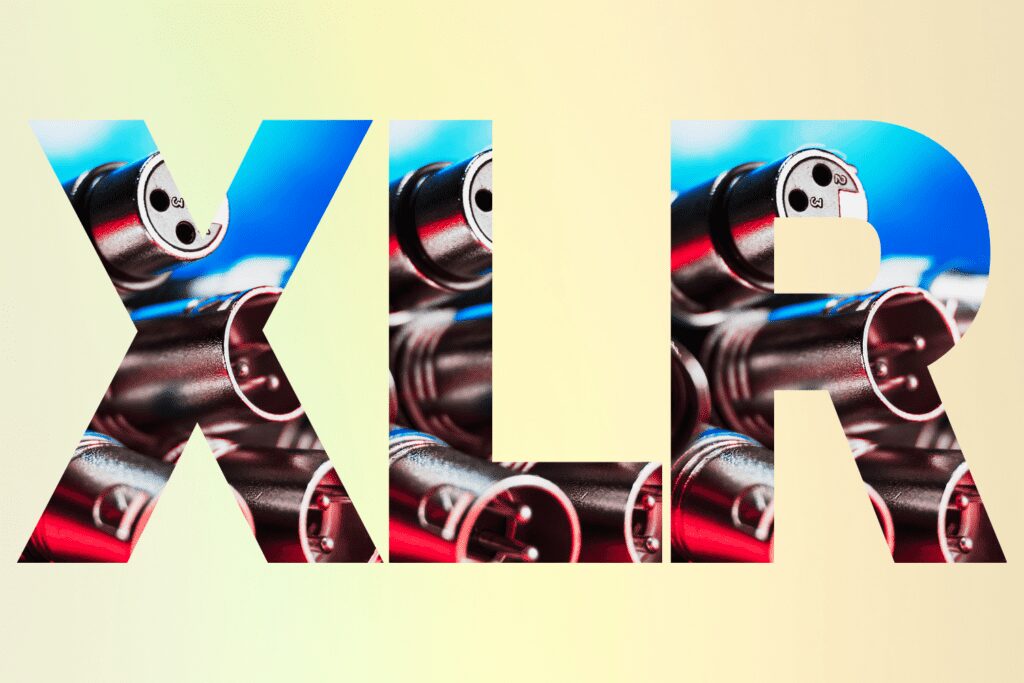XLR and AES/EBU cables are two of the most popular types of audio cables used in professional audio setups. While they might look similar, key differences can affect their performance and suitability for different applications.
AES/EBU and XLR cables are two cables used for transmitting audio signals. XLR cables are analog cables commonly used in the audio industry, while AES/EBU cables are digital cables used for transmitting digital audio signals.
When choosing between AES/EBU and XLR cables, it’s important to consider the specific needs of your setup. XLR cables are generally more versatile and can be used for various applications. In contrast, AES/EBU cables are designed for digital audio and may perform better in certain situations. Ultimately, the choice between the two will depend on your specific needs and preferences.
Table of Contents
- What are AES/EBU and XLR Cables?
- Differences Between AES/EBU and XLR Cables
- Analog vs Digital Connections
- Sound Quality
- Conclusion on XLR vs. AES/EBU Cables

What are AES/EBU and XLR Cables?
XLR cables are commonly used for balanced audio connections. They have three pins – one for the ground, one for the positive signal, and one for the negative signal. This design helps to reduce noise and interference, making them ideal for use in environments with a lot of electrical interference. AES/EBU cables, on the other hand, are used for digital audio connections. They use a different type of signal transmission than XLR cables and are designed to work specifically with digital audio equipment.
XLR cables are three-pin cables that are designed to carry balanced audio signals. They are commonly used for connecting microphones and other audio equipment to mixers, amplifiers, and other audio equipment. XLR cables are known for their durability and reliability, and they are often preferred over other types of cables for live performances and studio recordings.
AES/EBU cables, on the other hand, are digital cables that are designed to transmit digital audio signals. They are commonly used in professional audio applications, such as recording studios and live sound reinforcement systems. AES/EBU cables are typically used to connect digital audio equipment, such as digital mixers, signal processors, and audio workstations.
One of the main differences between AES/EBU and XLR cables is the type of signal they carry. XLR cables carry analog audio signals, while AES/EBU cables carry digital audio signals. Another difference is the type of connector used. XLR cables use a three-pin connector, while AES/EBU cables use a five-pin connector.
In summary, AES/EBU and XLR cables are two cables used for transmitting audio signals. XLR cables are analog cables commonly used in the audio industry, while AES/EBU cables are digital cables used for transmitting digital audio signals.
Differences Between AES/EBU and XLR Cables
Impedance
XLR cables typically have an impedance of 50-600 Ohms, while AES/EBU cables have a standard impedance of 110. This difference in impedance can affect the signal quality and noise level. XLR cables are often used for microphones and analog audio signals, while AES/EBU cables are commonly used for digital audio signals.
Connectors
XLR cables use a three-pin connector, while AES/EBU cables use a five-pin connector. The XLR connector is designed to prevent interference and noise, while the AES/EBU connector provides a balanced signal. The XLR connector is also commonly used in the music industry, while the AES/EBU connector is more commonly used in professional audio applications.
Shielding
AES/EBU and XLR cables are shielded to prevent interference and noise. However, XLR cables typically have a higher shielding level, making them more suitable for use in environments with high electromagnetic interference (EMI) or radio frequency interference (RFI).
The choice between AES/EBU and XLR cables depends on the specific application and the desired signal quality. XLR cables are ideal for analog audio signals and microphones, while AES/EBU cables are better suited for digital audio signals. The connectors and shielding of each cable type also play a role in determining which is best for a particular application.
Analog vs Digital Connections
When it comes to audio connections, there are two main types: analog and digital. Analog connections use a continuous signal to transmit audio data, while digital connections use a series of discrete signals. Each has its advantages and disadvantages, and the choice between the two will depend on the user’s specific needs.
Analog XLR
Analog XLR connections use three wires to transmit audio data: a ground wire, a positive wire, and a negative wire. The positive and negative wires carry the audio signal, while the ground wire provides shielding from interference. XLR connectors are commonly used for microphones, providing a balanced audio signal resistant to interference and noise.
One of the main advantages of analog XLR connections is their simplicity. They are easy to use and require no special equipment to connect. Analog XLR connections also provide high-quality sound, transmitting the audio signal in its original form without any digital conversion.
However, analog XLR connections are susceptible to noise and interference, especially over long distances. They also have a limited bandwidth, which can be a problem for high-frequency audio signals.
Digital AES/EBU
Digital AES/EBU connections use a two-wire system to transmit audio data: signal and ground wires. The signal wire carries the audio data in a digital format, while the ground wire provides shielding from interference. AES/EBU connectors are commonly used for digital audio equipment, such as CD players and digital audio workstations.
One of the main advantages of digital AES/EBU connections is their ability to transmit audio data without losing quality. They also resist noise and interference, making them ideal for professional audio applications.
However, digital AES/EBU connections require special equipment to connect, such as digital-to-analog converters (DACs) and analog-to-digital converters (ADCs). They also require clocking to ensure that the digital signals are transmitted accurately.
In conclusion, the choice between analog and digital connections will depend on the user’s specific needs. Analog XLR connections are simple and provide high-quality sound but are susceptible to noise and interference.
Digital AES/EBU connections provide high-quality sound without any loss of quality but require special equipment and clocking to ensure accurate transmission.
Sound Quality
When it comes to sound quality, both AES/EBU and XLR cables are capable of delivering high-quality audio signals. However, some differences between the two can affect the overall sound quality.
One of the main advantages of XLR cables is their balanced design, which helps to reduce noise and interference. This is particularly important when dealing with long cable runs or working in noisy environments. The balanced design also increases the signal-to-noise ratio, producing a cleaner sound.
On the other hand, AES/EBU cables use a different type of signal transmission known as differential signaling. This method improves noise rejection more than single-ended signaling used in unbalanced cables like RCA. As a result, AES/EBU cables are less susceptible to noise and interference, which can lead to a cleaner and more accurate sound.
Another factor that can affect the sound quality is the cable’s impedance. XLR cables typically have a lower impedance than the AES/EBU cables, which can result in a brighter and more detailed sound. However, this can also lead to losing low-end frequencies, making the sound less full and warm.
In contrast, AES/EBU cables have a higher impedance, which can result in a warmer and more natural sound. This can be particularly beneficial when working with digital audio, which can sometimes sound harsh or sterile.
Ultimately, the choice between AES/EBU and XLR cables will depend on the user’s specific needs. Both cables can deliver high-quality audio signals, but their designs and characteristics can affect the overall sound quality differently.
Conclusion on XLR vs. AES/EBU Cables
In summary, both AES/EBU and XLR cables have advantages and disadvantages. The choice between the two ultimately depends on the specific needs and preferences of the user.
XLR cables are widely used in the audio industry due to their balanced connection, which minimizes noise and interference. They are also relatively inexpensive and easy to find. However, they have a limited distance range and are unsuitable for digital signals.
On the other hand, AES/EBU cables are designed specifically for digital audio signals and can transmit over longer distances than XLR cables. They also have a higher impedance, which allows for better signal integrity. However, they are more expensive and less common than XLR cables.
It is important to note that the quality of the cable is just as important as the type of cable used. A high-quality XLR cable may outperform a lower-quality AES/EBU cable and vice versa.
In conclusion, it is recommended to carefully consider the specific requirements and budget before choosing between XLR vs. AES/EBU cables.
- Review of the ALABS IRON MINI-WL: A Powerhouse Wireless Microphone - October 4, 2023
- What is a Saturator in Music Production: A Brief Explanation - May 11, 2023
- What Are Rotary DJ Mixers? An Overview - May 11, 2023
SoundStudiomagic.com is a participant in the Amazon Services LLC Associates Program, an affiliate advertising program designed to provide a means for sites to earn advertising fees by advertising and linking to Amazon.com. We also participate in other affiliate programs which compensate us for referring traffic.

